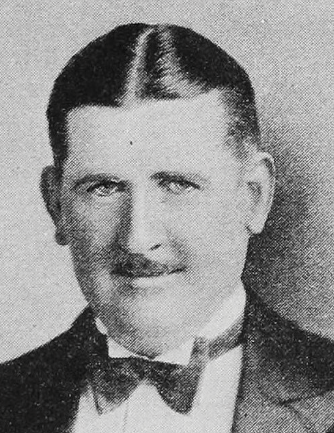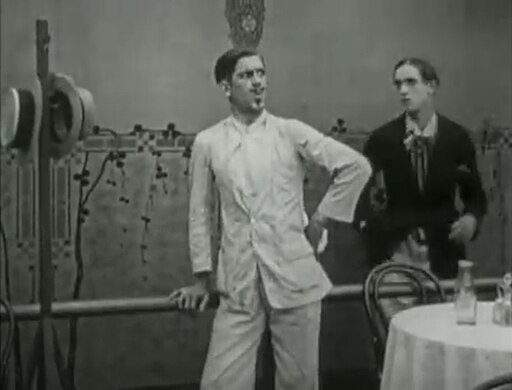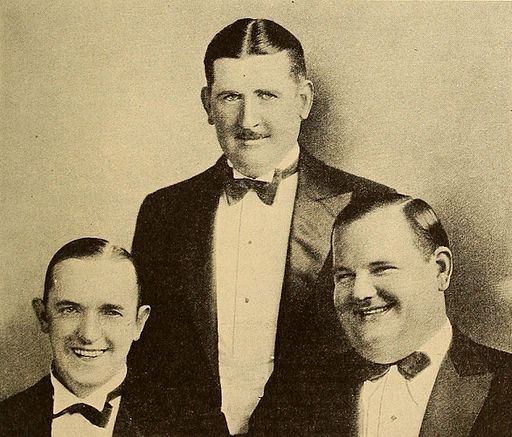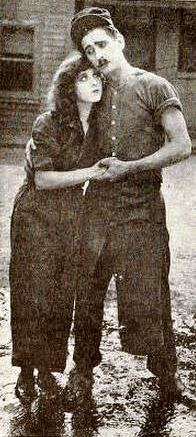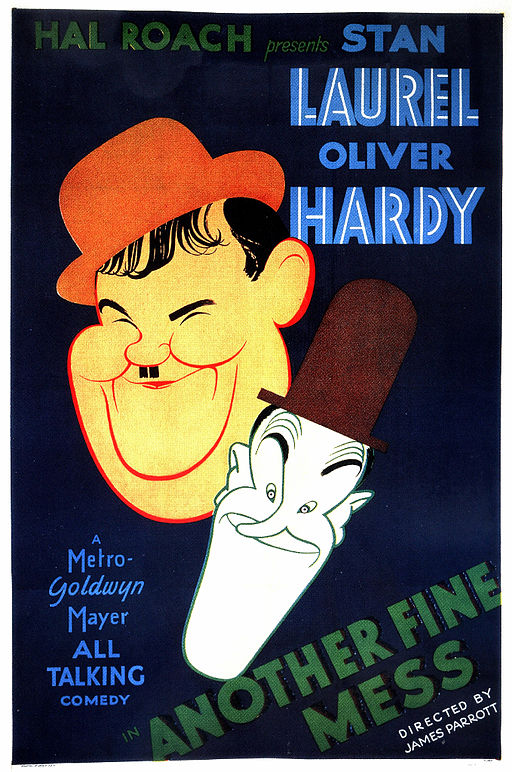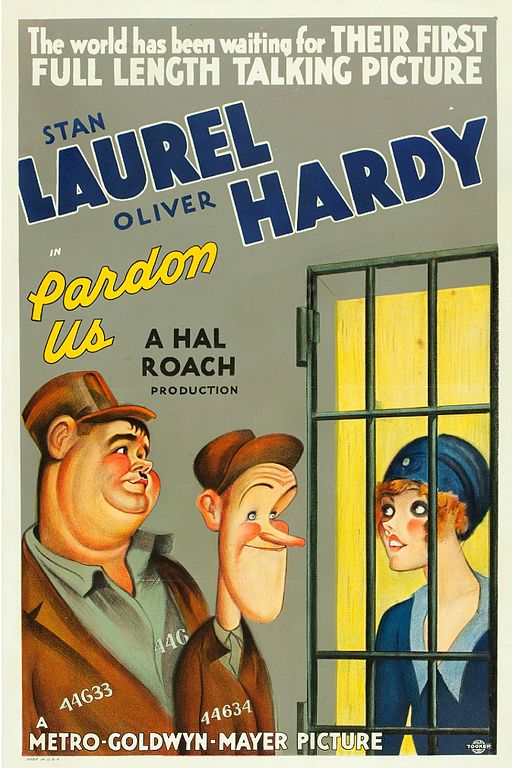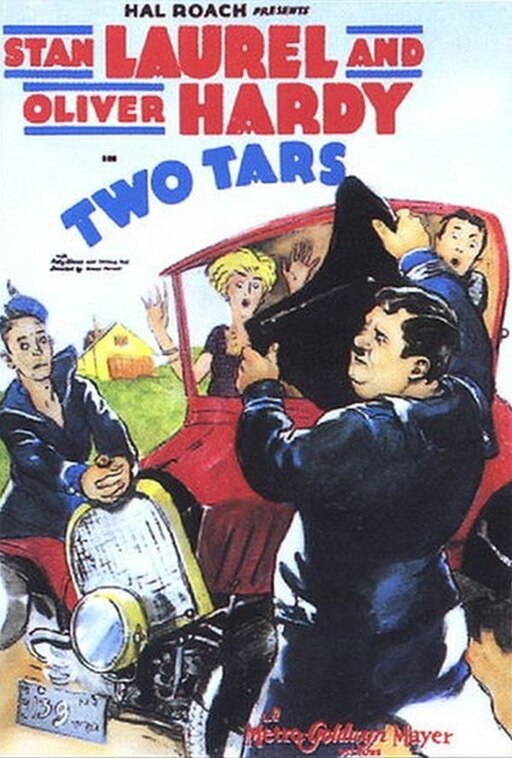James Parrott
back| Full Name | James Gibbons Parrott |
| Born | August 2, 1897 |
| Birthplace | Baltimore, Maryland, USA |
| Died | May 10, 1939 |
| Buried | Valhalla Memorial Park Cemetery in North Hollywood, Los Angeles, USA |
| Married to | Clara Miller (1921 - ?) - Ruby Ellen McCoy (1937 - 1939) |
| Children | None |
| Notable films | The Music Box (1932) - Pardon Us (1931) - Night Owls (1930) - Brats (1930) |
James Parrott
Pioneer of Early Comedy Cinema
James Parrott was a notable film director and actor, particularly known for his work in the early years of Hollywood, especially in the genre of silent comedy.
Unfortunately, Parrott's life and career were also marred by personal struggles, including health issues and battles with substance abuse, which contributed to his untimely death at the age of 41.
Related
James Parrott (1897 -1939)
Biography and Overview of his Career
James Parrott, a significant figure in the early era of Hollywood, led a life that intertwined personal challenges with professional brilliance, particularly in the realm of comedy filmmaking. His story is one of creative triumphs overshadowed by personal struggles.
- Born as James Gibbons Parrott on August 2, 1897, in Baltimore, Maryland, he was introduced to the world of entertainment early. His elder brother, Charley Chase, would also become a notable figure in comedy.
- Childhood and Education: Little is known about his early life, but it's clear that his family's involvement in the entertainment industry influenced his career path.
- Entry into Hollywood: Parrott started his career as an actor in the 1910s, appearing in short comedies. His talent for physical comedy and timing was evident even in these early roles.
- Transition to Directing: By the 1920s, he transitioned to directing, where he found his true calling. He worked extensively with the comedy duo Laurel and Hardy, directing some of their best-known works.
- Work with Laurel and Hardy: His collaborations with Laurel and Hardy are particularly celebrated. Films like "The Music Box," which won an Academy Award, showcased Parrott's skill in orchestrating physical comedy and slapstick.
- Style and Influence: Parrott's directorial style was marked by a blend of visual gags and situational comedy, which was pivotal in shaping the early sound era of Hollywood comedy.
- Contribution to Film Techniques: He was also known for his innovative use of film technology, particularly in films where actors played multiple roles, as seen in "Brats."
- Health Issues: Parrott's life was plagued with health issues, exacerbated by his struggles with substance abuse.
- Family Life: There is little public information about his marital status or children, suggesting a life more privately lived or perhaps overshadowed by his professional endeavors and personal struggles.
- Untimely Death: Parrott's life came to a tragic end on May 10, 1939. He passed away in Hollywood, California, at the young age of 41, leaving a legacy that was both luminous and shadowed by his personal demons.
- Influence on Comedy: Despite his relatively short life, Parrott's impact on the comedy genre is indelible. He was a key figure in the transition from silent to sound films, bringing a unique comic sensibility that influenced generations of filmmakers.
- Remembering James Parrott: He is remembered not just for his artistic contributions but also as a symbol of the complex interplay between artistry and personal hardship that often characterizes the lives of creative geniuses.
James Parrott's story is a poignant reminder of the ephemeral nature of fame and the personal costs that often accompany artistic greatness. His work remains a testament to his extraordinary talent and continues to be celebrated in the annals of cinematic history.
Tragic Death:
James Parrott's death on May 10, 1939, is often attributed to heart disease, although some sources suggest that his longstanding health issues and substance abuse problems might have played a significant role. His lifestyle, marked by the pressures of the film industry and personal challenges, likely contributed to his deteriorating health leading up to his death.
Interestingly, James Parrott's older brother, Charley Chase, also a renowned figure in the comedy film industry, died just a year after James, in 1940. Charley Chase's death was due to a heart attack.
Two Tars, Laurel and Hardy movie, directed by James Parrott:
Analysis of the Direction Style of James Parrott:
James Parrott's directorial style, particularly evident in his work with the comedic duo Laurel and Hardy, is notable for several key elements that made his films stand out during the early era of sound cinema. His approach can be analyzed in terms of his handling of comedy, narrative, and technical aspects:
Mastery of Physical Comedy and Slapstick:
- Physical Gags: Parrott excelled in crafting physical comedy. His background as an actor in silent films gave him a deep understanding of visual humor.
- Slapstick: He was adept at slapstick, a style of humor involving exaggerated physical activity. This is evident in films like "The Music Box," where the simple task of moving a piano up a long flight of stairs becomes a series of hilarious mishaps.
Use of Sound in Comedy:
- Early Sound Films: Transitioning from silent to sound films, Parrott skillfully integrated dialogue and sound effects to enhance the comedic effect.
- Timing: His impeccable timing in the use of sound effects and dialogue punctuated the visual gags, enhancing the overall humor.
Storytelling Through Misadventures:
- Simple, Relatable Plots: Many of his films centered around everyday situations gone awry, making them relatable and endearing to audiences.
- Character-Driven Humor: The comedy often stemmed from the characters' personalities and their reactions to situations, a style that worked exceptionally well with Laurel and Hardy's contrasting characters.
Technical Innovation:
- Camera Work: Parrott's direction showed a keen eye for framing and using the camera creatively to complement the comedic action.
- Editing: His editing style often accentuated the comedic timing, using cuts to enhance the impact of gags.
Collaboration with Actors:
- Working with Laurel and Hardy: Parrott's collaboration with Laurel and Hardy was a hallmark of his career. He allowed them the freedom to improvise, while also guiding the overall vision of the film.
- Actor's Director: Being a former actor himself, he understood how to get the best comedic performances from his cast.
Influence on Comedy Genre:
- Setting Standards: His films set a high standard for sound comedies and influenced the genre's development.
- Legacy: Parrott's style influenced future generations of filmmakers in the comedy genre.
Highlight of his Career with “The Music Box”:
"The Music Box," directed by James Parrott in 1932, holds a special place in cinema history and plays a pivotal role in cementing Parrott's legacy in film, particularly in the comedy genre. This film's significance to his legacy can be analyzed from several perspectives:
Academy Award Recognition:
- Historical Win: "The Music Box" won the Academy Award for Best Live Action Short Film, Comedy. Although the Oscar is typically awarded to the producer, the director's role in crafting the film is crucial. This accolade brought significant prestige to Parrott's career.
- Validation of Talent: The Oscar win served as an industry-wide acknowledgment of Parrott's skills as a director, especially in the realm of comedy.
Iconic Scene and Lasting Popularity:
- Memorable Sequence: The film is renowned for the sequence where Laurel and Hardy struggle to move a piano up a long flight of stairs. This scene has become iconic in the history of comedy films.
- Enduring Appeal: Decades later, the humor and creativity of this film continue to resonate with audiences, showcasing Parrott's timeless appeal.
Innovative Use of Sound in Comedy:
- Transition from Silent to Sound: "The Music Box" came at a time when cinema was transitioning from silent films to talkies. Parrott's effective use of sound to enhance comedic timing was innovative and influential.
Enhancing Laurel and Hardy's Legacy:
- Key Collaboration: The film is one of the most celebrated collaborations between Parrott and the comedic duo Laurel and Hardy. Parrott's direction played a significant role in shaping their legacy as comedy legends.
Influence on Comedy Genre:
- Setting Standards: The film set high standards for physical comedy and slapstick in cinema, influencing how comedy would be approached in subsequent years.
- Teaching Tool: "The Music Box" is often studied in film schools for its exemplary use of timing, pacing, and physical comedy.
Personal Triumph Amidst Challenges:
- Highlight of Career: Despite personal struggles, including health issues and battles with substance abuse, "The Music Box" stands as a high point in Parrott's career, highlighting his professional excellence.
Awards and Recognition:
"The Music Box" (1932)
- Academy Award for Best Live Action Short Film (Comedy): This film, directed by James Parrott, won the Oscar in this category. While the award is typically given to the producer, the director's role is undeniably crucial in the creation and success of the film. "The Music Box" is famous for its iconic scene where Laurel and Hardy comically struggle to move a piano up a long flight of stairs.
Other Recognitions
- While specific awards for his other works are not well-documented, Parrott's films, especially those featuring Laurel and Hardy, have been celebrated for their comedic brilliance and are considered classics in the genre.
- His work has been acknowledged by film historians and critics for its significant contribution to the development of comedic cinema.
- James Parrott's legacy in film, particularly in the realm of comedy, has been honored through retrospectives and film studies. His innovative techniques in the early sound era of cinema and his impact on the genre have been subjects of admiration and study in film circles.
Movies Directed by James Parrott:
1920s
- "Do You Love Your Wife?" (1929): A short comedy where misunderstandings and jealousy lead to a series of humorous situations.
1930s
- "Blotto" (1930): Laurel and Hardy sneak out to a nightclub with a bottle of liquor, only to discover it's been replaced with tea by Stan's wife.
- "Brats" (1930): Laurel and Hardy take care of their mischievous children, played by themselves in dual roles.
- "Below Zero" (1930): A comedic tale of Laurel and Hardy as street musicians struggling to make a living in a blizzard.
- "Night Owls" (1930): The duo attempts to redeem themselves by catching a burglar, leading to a series of slapstick mishaps.
- "Another Fine Mess" (1930): Laurel and Hardy pose as the owner and the maid of a mansion, leading to a comedic case of mistaken identity.
- "Laughing Gravy" (1931): A short film where Laurel and Hardy try to hide their pet dog from their landlord.
- "Pardon Us" (1931): Laurel and Hardy's first feature-length film, where they end up in prison after trying to sell beer to a policeman during Prohibition.
- "The Music Box" (1932): A classic comedy where Laurel and Hardy attempt to deliver a piano up a long flight of stairs, winning an Academy Award for Best Live Action Short Film.
- "The Chimp" (1932): A comedy about a circus gone bankrupt, where Laurel and Hardy end up with a gorilla and a flea circus as their severance pay.
- "County Hospital" (1932): Hardy is in the hospital with a broken leg, and Laurel pays him a visit, leading to a series of comic disasters.
- "Scram!" (1932): Ordered to leave town by a judge, Laurel and Hardy have a series of misadventures including a stay at a rich drunk's house.
- "Their First Mistake" (1932): Laurel and Hardy adopt a baby to save Hardy's marriage, but when Hardy's wife leaves him, they are stuck with the infant.
- "Towed in a Hole" (1932): Laurel and Hardy decide to go into the fish business, leading to a disastrous attempt to refurbish a dilapidated boat.
Movies featuring James Parrott as Actor:
1915
- "The Three Scratch Clue": Details and synopsis for this film are not widely documented.
1917
- "Lonesome Luke, Lawyer": A short comedy film featuring Harold Lloyd, with James Parrott likely in a supporting role.
- "Lonesome Luke Loses Patients": Another entry in the "Lonesome Luke" series, with Parrott in a supporting comedic role.
1918
- "Swing Your Partners": A short comedy film, likely featuring Parrott in a humorous role.
- "Two-Gun Gussie": A short comedy film where Parrott likely played a supporting character in a Western-themed setting.
1919
- "Before Breakfast": A short comedy film, with Parrott possibly in a supporting role.
- "The Marathon": Another short comedy, details of Parrott's role are not widely known.
- "Spring Fever": A comedy where Parrott likely contributed to the humorous storyline in a supporting role.
1920s
During the 1920s, James Parrott's career transitioned more towards directing, but he still appeared in various films, often in smaller roles or cameos.
Notable Points
- Early Career: Parrott's early acting career was characterized by roles in short comedies, where he often played supporting or comedic characters.
- Transition to Directing: As his career progressed, he focused more on directing, especially in the 1920s, where he made significant contributions to comedy films, particularly working with Laurel and Hardy.
James Parrott's acting career laid the foundation for his later success as a director. His experience in front of the camera likely informed his understanding of comedic timing and physical comedy, which became hallmarks of his directorial style.

